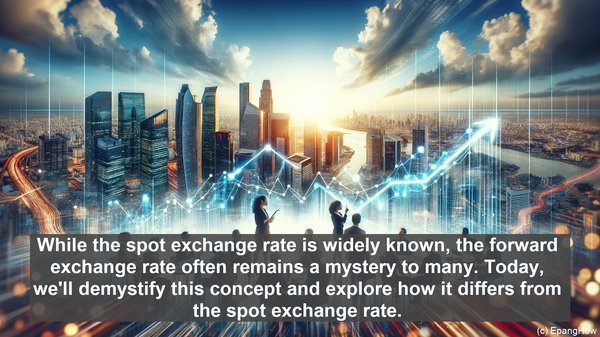Introduction: The Intricacies of Exchange Rates
Hello everyone! Welcome to our article on the forward exchange rate and spot exchange rate. In the world of international trade and currency markets, exchange rates play a pivotal role. They determine the value of one currency relative to another. While the spot exchange rate is widely known, the forward exchange rate often remains a mystery to many. Today, we’ll demystify this concept and explore how it differs from the spot exchange rate.
Spot Exchange Rate: The Present Value
Let’s start with the spot exchange rate. Simply put, it’s the current rate at which one currency can be exchanged for another. It’s the value you’ll find when you search for currency rates online or at a local bank. The spot exchange rate is influenced by various factors, including interest rates, inflation, and market demand. It’s the rate you’ll typically encounter when engaging in immediate currency transactions, such as buying foreign currency for a vacation.

Forward Exchange Rate: A Glimpse into the Future
Now, let’s shift our focus to the forward exchange rate. Unlike the spot rate, which reflects the present value, the forward rate is a projection of the future value of a currency. It’s the rate at which two parties agree to exchange currencies at a specified future date. For instance, if a company plans to import goods from another country in six months, they might enter into a forward contract to lock in the exchange rate today, ensuring certainty in future transactions. This ability to hedge against potential currency fluctuations is one of the key advantages of the forward exchange rate.

Factors Influencing Forward Exchange Rates
Several factors impact forward exchange rates. One of the primary drivers is the interest rate differential between the two currencies. A higher interest rate in one country relative to another can lead to a higher forward rate for that currency. Additionally, market expectations, geopolitical events, and economic indicators can all influence forward rates. It’s important to note that forward rates are not set by a central authority but are determined by the market forces of supply and demand.
Comparing Spot and Forward Rates
While the spot rate is readily available and applicable for immediate transactions, the forward rate provides a valuable tool for planning and risk management. By utilizing the forward rate, businesses can mitigate the uncertainty associated with future currency movements. However, it’s essential to remember that forward rates are estimates, and actual exchange rates may differ when the contract matures. Moreover, forward contracts are typically binding, and any changes or cancellations may incur costs.
